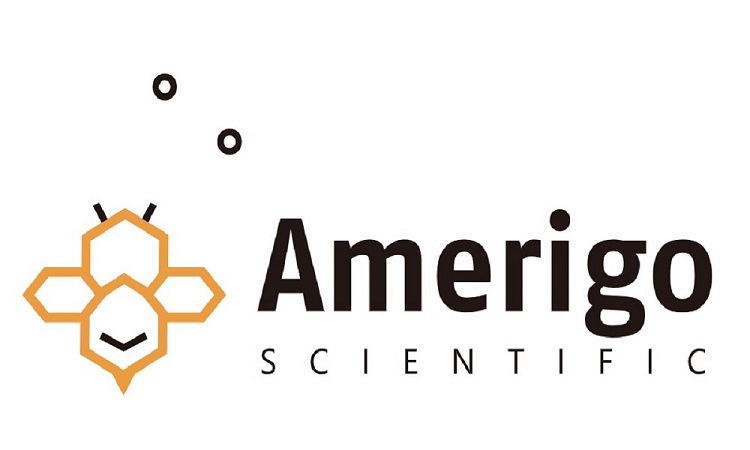Amerigo Scientific
Amerigo Scientific
PVC membrane electrode based on bis(2-nitrophenyl)disulfide carrier acts as sensor for zinc ions. Bis(2-nitrophenyl) disulphide undergoes mechanochemical grinding with bis(4-chlorophenyl)disulfide in the presence of 1,8-diazabicyclo[5. 4. 0]undec-7-ene catalyst via metathesis reaction to yield non-symmetrical heterodimer 4-chlorophenyl-2′-nitrophenyl disulfide.
More Information
Supplier Page
Amerigo Scientific
Thermal inverse-type hetero-Diels-Alder reaction of O-silyl-protected lactal and bis(2,2,2-trichloroethyl) azodicarboxylate has been reported.
More Information
Supplier Page
Amerigo Scientific
Bis(2,4-dinitrophenyl) oxalate (DNPO) is a chemiluminescence reagent. Chemiluminescence produced in the oxidation of DNPO by hydrogen peroxide in the presence of a polycyclic aromatic hydrocarbon was monitored by spectroscopic methods. The kinetics of the imidazole-catalyzed decomposition of DNPO was investigated by the stopped-flow technique.
More Information
Supplier Page
Amerigo Scientific
Bis(4-chlorophenyl) disulphide can be synthesized from 4-chlorophenylthiol via oxidation. It produces poly(p-phenylene sulfide), via thermolysis. Bis(4-chlorophenyl) disulfide can also be prepared by a microwave assisted method involving the reaction between respective elemental sulfur and 1-chloro-4-iodobenzene in the presence of CuO nanopowder (catalyst).
More Information
Supplier Page
Amerigo Scientific
Amerigo Scientific
Amerigo Scientific
Bis(5-chloro-2-hydroxyphenyl)methane is a fungicide and is very effective against many celluloytic fungi, such as Penicillium, Aspergillus,Cladosporium and Trichoderma sp. It is a phenolic pesticide and undergoes photodegradation in the presence of visible-light absorber photosensitizer riboflavin.
More Information
Supplier Page
Amerigo Scientific
Bis(ethylenedithio)tetrathiafulvalene (BEDT-TTF) is an organic superconducting polymer that is used as an electron donor with a superconducting transition temperature (Tc) of 10K.
More Information
Supplier Page
Amerigo Scientific
Bis(hexamethylene)triamine is an aliphatic polyamine. It is a spermidine analog and has been reported to lack the enhancing effect on mitochondrial Ca(2+) accumulation but shows inhibitory effect on the Ca(2+) and Pi-induced mitochondrial permeability transition.
More Information
Supplier Page
Amerigo Scientific
Bis(hexamethylene)triamine (Bis-HEA, BHMT, BHMTA) is an aliphatic polyamine. It is a spermidine analog and has been reported to lack the enhancing effect on mitochondrial Ca(2+) accumulation but shows inhibitory effect on the Ca(2+) and Pi-induced mitochondrial permeability transition. Its ability in inhibiting shale swelling and dispersion in water-based drilling fluid has been investigated.
More Information
Supplier Page
Amerigo Scientific
The liquid structure of bis(methylthio)methane at room temperature was studied by the bonding and non-bonding interatomic potential functions (FMP-RMC) simulation.
More Information
Supplier Page
Amerigo Scientific
Bis(trimethylsilyl) malonate is precursor for metal-organic chemical vapor deposition (MOCVD) of HfO2 and ZrO2 thin films. It undergoes acylation reaction with acid chlorides and acyl carbonates in the presence of triethylamine and magnesium or lithium salts to give β-keto acids or methyl ketones.
More Information
Supplier Page
Amerigo Scientific
Bis(trimethylsilyl)acetylene (BTMSA) participates as nucleophile in Friedel-Crafts type acylations and alkylations. BTMSA undergoes rhodium catalyzed addition reaction with diarylacetylenes. It undergoes cycloaddition with 1,5-hexadiynes in the presence of CpCo(CO)2 (Cp=cyclopentadienyl) to form benzocyclobutenes. Structure of BTMSA was characterized by a centre of inversion present on triple bond (length=1. 208(3)?). TiCl4-Et2AlCl catalyzed Diels-Alder reaction of BTMSA […]
More Information
Supplier Page


